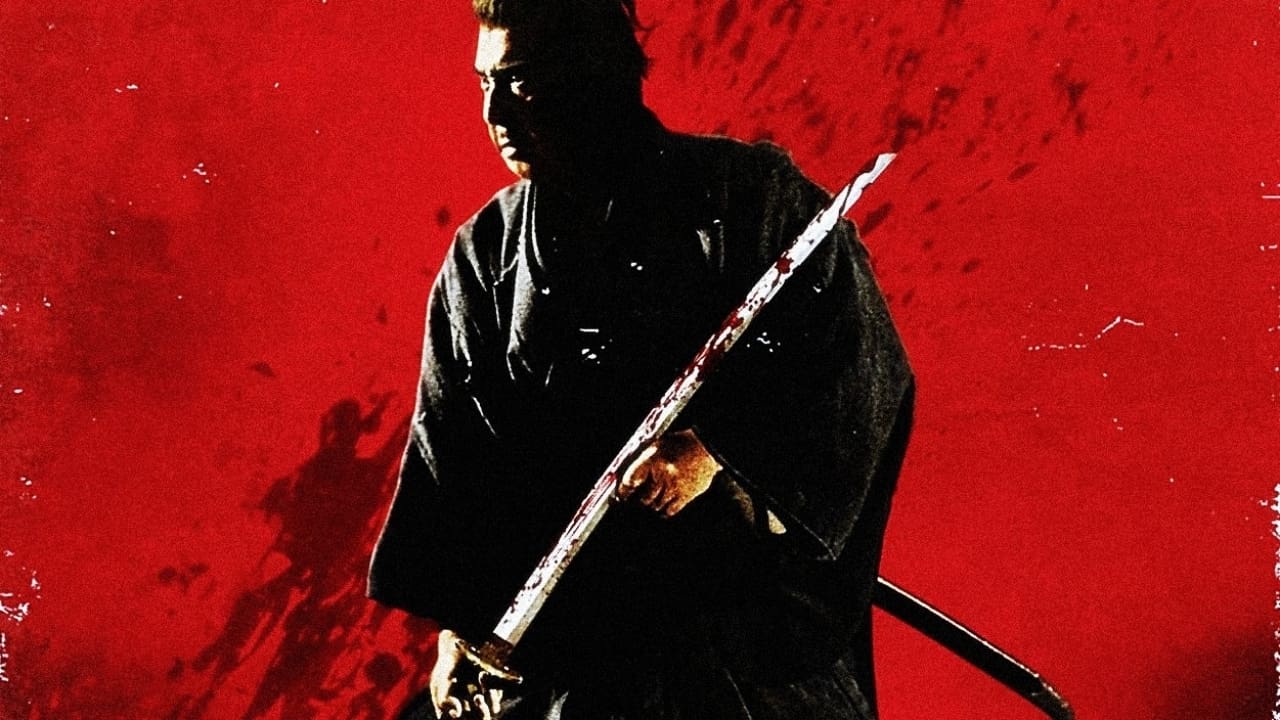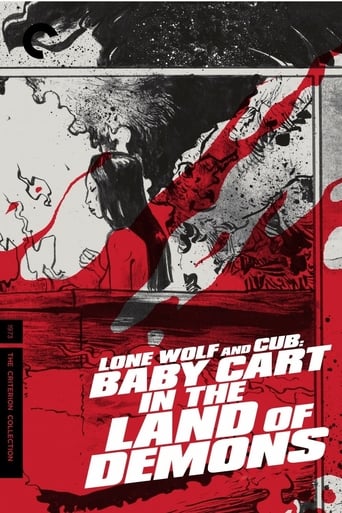



Some things I liked some I did not.
just watch it!
I think this is a new genre that they're all sort of working their way through it and haven't got all the kinks worked out yet but it's a genre that works for me.
View MoreAmazing worth wacthing. So good. Biased but well made with many good points.
View MoreThe indefatigable Itto Ogami continues his journey through feudal Japan with his son in tow. BABY CART IN THE LAND OF DEMONS is the fifth in the six-film series and for the first time, the film shows signs of flagging. It's not that I didn't enjoy this movie, because I did; rather, I started to find the plot shenanigans to be ever-so-slightly familiar, if not a little tired. Much of what goes on in the film has been seen before, and although the action sequences are as vivid as ever, there's little here that hasn't been done previously (and better).As per usual, Ogami finds himself caught up in plotting between various factions and must form political allegiances to see him through. The opening of the film sees him tackling a series of martial arts masters, all of whom test him unawares to make sure he's worthy of the job. The plot then takes a lengthy and slightly pointless detour to a market village where Daigoro is accused of helping a pickpocket conduct her business. Although this sequence has been incorporated to allow greater characterisation of Ogami's son, I found it dragged the pacing down to crawling speed.Thankfully, things pick up for a relatively exciting climax which sees Ogami finishing off his job. There's still a great deal of entertainment value from watching the various characters occupying different positions in Japanese society at this time and how they react to our hero. The cast give understated performances and the action is typically well shot, but I'm actually looking forward to the end of this series now: better to end on a high than dragging it into the ground.
View MoreI was interested in seeing how director Kenji Misumi would pick up the series again. He directed the first three movies but the previous one, "Kozure Ôkami: Oya no kokoro ko no kokoro", got directed by Buichi Saito. would Kenji Misumi continue on the same trend he had started the series in, or would he go with the successful more western style of approach Buichi Saito brought to the series.The answer would be the first. Kenji Misumi pretty much continues what he had started. This is not a bad thing of course, since all of the first three movies were great and entertaining ones but it just makes it a little bit less accessible as a movie for the western audience. This style was however also more appreciated in Japan itself, so the switch back is quite understandable.The movie starts off kind of slow and uninteresting and I wasn't too fond about its storytelling but it soon finds its old form. It actually turns into one of the more stronger movies out of the series, also story-wise. The movie does feature some great memorable moments in it, perhaps even more so than was the case with any of the previous movies. It's a very entertaining movie and its fight sequences are a pleasure to watch. It's being highly original and creative with some of its moments.It's awesome to see how Ogami Itto is taking on whole armies again. You would think that by now his reputation would had exceeded him and people would know better to cross swords with him. The Japanese are however too noble and proud to just runaway at his sight or perform harakiri right away. Luckilly for use though, since it means that the movie gets action packed and features plenty of fountains of blood again, especially toward the ending when the movie becomes really more and more action filled and spectacular.Such an awesome and entertaining movie.9/10http://bobafett1138.blogspot.com/
View MoreMaster film-maker Kenji Misumi returns in the Lone Wolf and Cub series to helm the fifth entry, Baby Cart in the Land of the Demons, and if you thought even just for a fleeting second that this would be anything but orgasmically violent and existentially mystifying, you just don't have enough confidence on the man.Picking up the story of the Shogun's former executioner Ogami Itto and his son Daigoro, this is another tale of betrayal, political intrigue and murder. The Kuroda Clan is in deep trouble, trouble that Ogami Itto's fierce opponents, the Yagyu, want to exploit for their own benefit. Ogami Itto is paid his usual fee (500 gold pieces of course) and bloodshed ensues.Now as a chambara and LWAC fundamendalist, I will confess upfront that the combination of stylized comic-book violence and the existential, quasi-mythic look at both historical Japan and the genre conventions that form chambara, are a sure win in my book. It might not be as groundbreaking as the first two entries in the series, it is after all following a now well-tested tradition, but it is done with such conviction and deliberation that one has to pay notice. As with other serialized characters of the chambara universe like Zatoichi or Nemuri Kiyoshiro, it is exactly that it simultaneously meets our expectations as a pure Lone Wolf movie that doesn't disappoint the way Hollywood sequels do and that it breaks the traditional forms of the period drama that make even a fifth entry of this tried and tested recipe so good.The plot is of secondary value to the actual journey of Itto and his son. They have been through the crossroads at Hades and now into the land of the demons and there is no turning back. What pushes them through piles of dead bodies is revenge, and I say "them" because Daigoro has made his commitment to follow the same path of blood as his father, their fates inextricably linked through life and death; yet as with other Lone Wolf movies revenge is but a vague part of the storyline. A skeleton that gives these movies form and reason to be but they take life beyond that. In Lone Wolf and Cub's case their journey is an existential fable bathed in blood, like they are doomed to cut their way through the land for all time and it is through the act of killing that their existence takes meaning. It takes one look at Ogami Itto's grim stare to realize that if there is a god and he would dare to appear in front of him, Itto would swiftly cut him down and move on his path. Takashi Miike understood all this crystal clear when he made Izo.Speaking of blood, yes, there will be lots of it. It's a staple of the Lone Wolf movies and I wouldn't have it any other way. Arterial sprays, chopped heads and bodies sliced in half. And then there is Tomisaburo Wakayama, the man, the myth, crafting the most mesmerizing character role of his career.Strongly recommended as are all the other Lone Wolf movies. Watch them in order though.
View MoreThis one seems quite popular among viewers, but I didn't really care for it. "Peril" and "Hades" are by far the best in my opinion. I find it odd that the messengers are able to give Ogami the full extent of their plight just before dying (even when being consumed by fire). One plus is his display at the end of the movie. He's got that sword moving so quick you can hardly see it. Another aspect I found interesting was when Daigoro was beaten to save a pickpocket. He seems to share his father's empathy for the down-and-out. Don't get me wrong, this isn't a bad movie. But in this great series, I think this one and "White Heaven in Hell" are the weakest.
View More